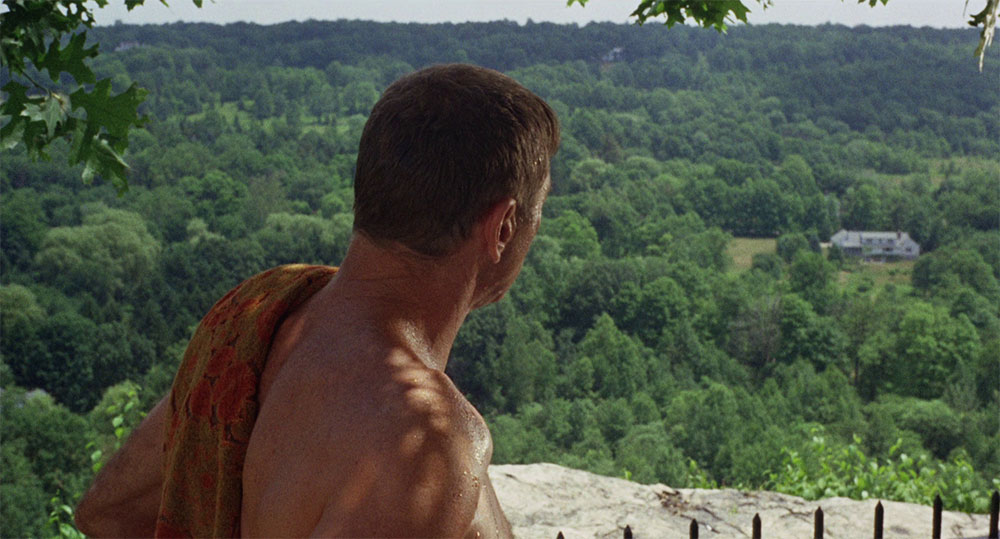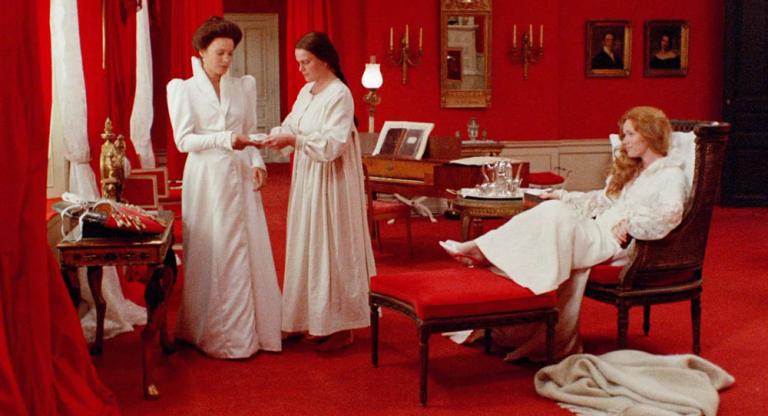Illeana Douglas began her film acting career in the late 1980s and came to prominence in Martin Scorsese’s 1991 remake of Cape Fear, in which she plays a legal clerk who has an unfortunate encounter with Max Cady, the psychopath ex-con portrayed by Robert De Niro. Throughout the ’90s and aughts she appeared in a variety of films, many of them notable indie dramas directed by emerging auteurs, including Nancy Savoca’s Household Saints (1993); Gus Van Sant’s To Die For (1995), in which, among other things, she figure skates over the end credits; and Terry Zwigoff’s Ghost World (2001), where she created the best version of a high-school art teacher in movies. In 1996 she starred in Allison Anders’s Grace of My Heart as a fictionalized version of Carole King making her way through the world of pop music and songwriting in 1960s New York.
Douglas is that rare actor who is also a cinephile. In 2012 she became a host on the now Zaslav-imperiled Turner Classic Movies. Three years later she wrote what may be the only actress-cinephile memoir, I Blame Dennis Hopper, a witty remembrance of her upbringing and her early years in the film business, with many asides on the actors and movies that influenced her. It was named “Best Pop Culture Book of 2015” by Entertainment Weekly. Her interest in film history and in the lives of Hollywood players may stem from being the granddaughter of Melvyn Douglas, suave leading man of sophisticated 1930s Hollywood movies like Ninotchka (1939), with Greta Garbo.
Douglas, however, was not raised in Hollywood. Her parents were wealth-rejecting hippies who brought her up in semi-rural Connecticut, a situation she describes with antic panache in her memoir. Though she and I did not meet back then, we grew up within a few miles of each other, haunting the same newsstands and bookstores, visiting the same veterinarian when our pets got sick. (For some reason this kindly animal doctor owned movie mogul Jack Warner’s 1937 Mercedes-Benz 540K Special Roadster.) Douglas’s new book, Connecticut at the Movies, is a deep dive into the cinematic history of our shared home state. It examines films made in Connecticut dating back to the silent era, along with Hollywood movies that take place in the Nutmeg State but were shot on soundstages in Los Angeles.
This Tuesday, December 12, at 7pm, Douglas will be at the Jacob Burns Film Center talking with the writer and film critic Janet Maslin about her new book, and presenting Frank Perry’s 1968 film, The Swimmer, starring Burt Lancaster. Based on a John Cheever story, The Swimmer was shot in Westport, Connecticut. Lancaster, who appears throughout the film in only bathing trunks, plays an upper-middle-class philanderer who gets the idea, during a midlife crisis, that he can cross his wealthy suburb by swimming from pool to pool. Douglas and I spoke by phone about that film, her book, and the cinema of Connecticut in general. Our conversation has been edited for length and clarity.
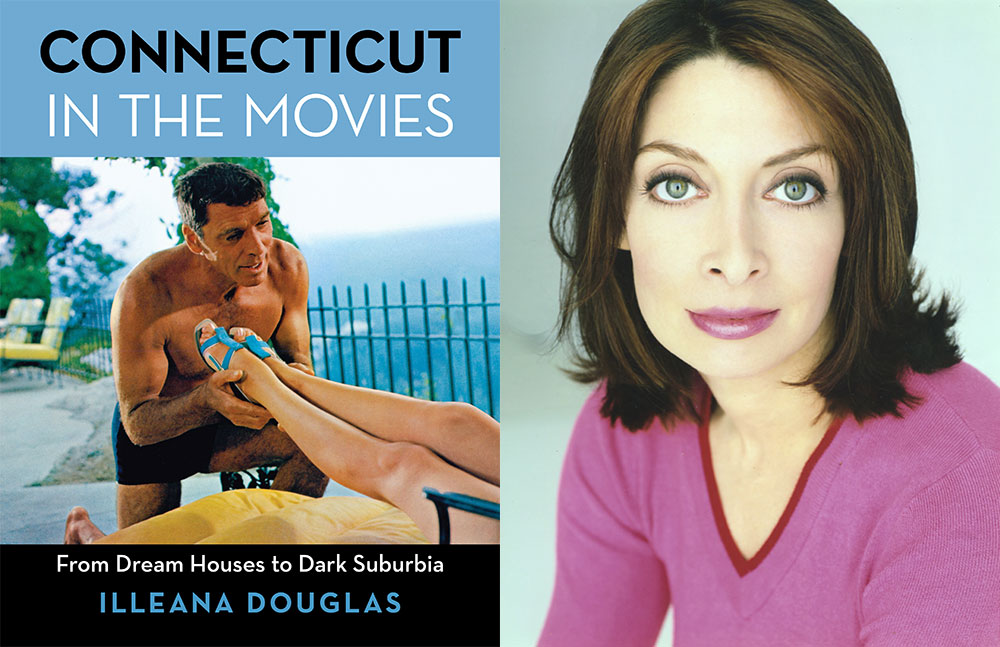
A.S. Hamrah: Congratulations on Connecticut in the Movies. It's such a thorough book. It's very entertaining. It's filled with historical detail. Though it’s big, with lots of color photos, it's not really a coffee table book. It's an actual book of film history. How did you decide to write it? And when did you write it?
Illeana Douglas: It began with that web series group that I'm part of, Trailers from Hell, with Joe Dante. I was delighted to find out, and I couldn’t believe it, but nobody had done a trailer about The Swimmer (1968). That movie was kind of my secret in the group. And The Swimmer has been gaining in popularity over the years, as certain movies do.
Early on in my career I was working for the publicist Peggy Siegal, and she shared a floor in a building in Manhattan with Frank Perry, the director who made The Swimmer. He gave me a little role in his movie Hello Again (1987), which started my acting career in films. And then, because I expressed an interest in writing, he gave me all of his early films to watch on VHS. One of them was The Swimmer, and I watched it, and I thought, “What the hell is this movie? This is insane.” I really related to certain aspects of it, and I knew part of the reason was because it takes place in Connecticut and I’m from there.
So then cut to me doing the essay for Trailers from Hell, and it really garnered a lot of interest. When Covid started, I thought, “Well, maybe I'll do an extended essay about films made in Connecticut,” because nobody seems to know that these movies that are so popular, some quite famous, were either set in Connecticut and shot in Connecticut, or set in a fictionalized version of Connecticut and shot in Hollywood. So I started to write about The Swimmer. Then Stanley and Iris (1990), the Martin Ritt drama about illiteracy with Jane Fonda and Robert De Niro, was the second essay I wrote. It’s a movie which shows a deglamorized, working-class Connecticut I wanted to contrast with the world of wealth and privilege in The Swimmer.
After those, I thought, “There's a book here.” And then, because, you know, my life is always like some crazy Russian novel, as I got into writing about the 1930s and what I call the “Country Living Comedies,” I found myself, as Covid dragged on, thinking maybe a farmhouse in Connecticut would be good for writing a whole book about these movies, and for research I could travel around to the locations where they were shot. It was complete fantasy. And as fantasies tend to manifest themselves, my neighbor in Los Angeles walked across the street and asked me if I was thinking of selling my house. So I sold it very quickly and the next thing I knew I’m living in Connecticut. That’s where I wrote most of the book, and living in this house has been a story in itself.
ASH: So you’ve moved back permanently to our home state?
ID: Yes, I did. With all the baggage that comes along with that.
ASH: But the town you're living in now is not the town you grew up in?
ID: It's very close. As you know, these towns are like a hundred feet from each other. It’s in the Old Saybrook area.
ASH: Connecticut has a long history in the movies, as your book shows, going back before D. W. Griffith. He shot part of Way Down East (1920) there, for instance. But I think people's first associations with Connecticut and movies are in screwball comedies from the 1930s, like Theodora Goes Wild (1936) and Bringing Up Baby (1938).
ID: These “Country Living Comedies,” as I call them, often share a basic plot. A cynical New Yorker is in a family that wants him to be a banker, and he's unhappy. Or he's in a marriage of convenience to a wealthy woman who wants to live in the city but he wants to break free to be an artist. Somehow he ends up in Connecticut. Then it becomes transformational being around these non–New Yorkers. He realizes it’s a better way to live. At that time, people from Broadway were buying country houses and relocating to Connecticut.
One woman in particular fascinated me, Alice DeLamar. She had an estate. She was a wealthy heiress and a patron of the arts. I mean very much like in the plot of one of these movies. She came from a wealthy family and hated the restrictive nature of it. So she got a country house in Connecticut and invited all sorts of artists, people like Eva Le Gallienne and George Balanchine, out to live with her.
This began to create areas like Westport, where later F. Scott Fitzgerald would go to write. Noël Coward was another. And of course Katharine Hepburn, who became like the ambassador of Connecticut, had a similar story. She was from a wealthy family and wanted to get away. Then the Group Theater located to Brookfield, to the Pinebrook Country Club in Trumbull. All of this experience of Connecticut began to get translated into movie plots.
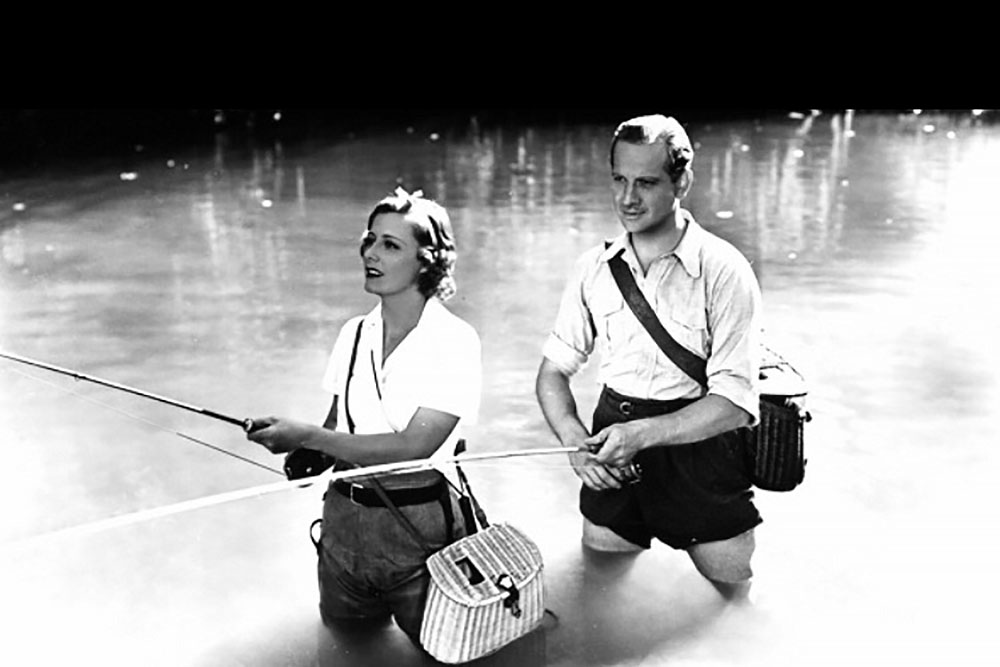
Theodora Goes Wild (1936) is my favorite. It’s about a woman writer living a secret life in a town called Lynnfield, which sounds like Litchfield, where a lot of artists relocating from New York wound up. My grandfather is in Theodora as the guy who Connecticut transforms from being a shallow playboy into someone fishing and berry-picking, who decides it’s better to live there. The director of the film, Richard Boleslawski, a kind of mysterious figure in Hollywood cinema who died fairly young, had his roots in teaching acting at the Group Theater in Connecticut.
So all of these comedies have organic roots. The same with Bringing Up Baby. You have Katharine Hepburn doing the prototype of the Connecticut woman, everything about her, her kind of craziness, her hair; she wears pants, she golfs. And she is the pursuer of Cary Grant, not the other way around. All that was initially rejected by the studio, RKO. They couldn’t stand the film; they thought she was horrible. And after that movie, she got released from her contract and went back to Broadway and did The Philadelphia Story on stage and returned triumphantly to Hollywood and made it into a movie.
Bringing Up Baby has organic roots, too, because the Cary Grant character is based on the paleontologist O. C. Marsh losing a bone to his Brontosaurus, and this is exactly the Brontosaurus skeleton that is in the Peabody Museum at Yale in New Haven. And then there is the decor in that movie at the house in Connecticut. I could write a whole book just about the Hollywood version of Connecticut and Connecticut style, and the craze for colonial in Hollywood homes in the 1930s and ’40s: the fireplaces, the chairs, the sofas.
ASH: You point out in the book that it was because of Bringing Up Baby that Howard Hawks’s wife, Slim, redecorated their house in the exact Hollywood colonial style of those sets.
ID: One thing I wanted to include, but that really didn’t fit in the book and I didn’t have the exact research on, was how at some point Lew Wasserman, the head of Universal, allowed his wife to redecorate the studio’s offices in the colonial revival style of the 1930s. In the 1990s I went to an auction of all that stuff, and I bought a lot of furniture that looked like Connecticut antiques, these kind of fake antiques. This is the look successful Hollywood people wanted at one time. If you’ve ever seen photos of the interior of Alan Ladd’s house, for instance, and [those of] other big movie stars of the classic period, it was all kind of kooky colonial-ish, with lots of kids around. They recreated this Connecticut ideal in Beverly Hills.
ASH: One of the fascinating things in the book is how the Hollywood version of Connecticut then became something that influenced actual home construction in New England. The house in Mr. Blandings Builds His Dream House (1948) became a house that was actually built for families in Connecticut. People could buy the plans and a kit to recreate that house. And those houses are still there, blending in.
ID: In the 1930s a lot of Connecticut was farmland and countryside, as it was through the 1980s, really. It was the idea of being in a place like that that was transformational during the Depression and the World War II era, especially in Christmas in Connecticut (1945), and then later with Mr. Blandings. It’s the house that allows this kind of transformation in people’s lives. And then with Blandings it isn’t just a house in the countryside, it's a certain type of house. And from that moment on, in every Hallmark movie, and every movie about dreaming of living in suburbia, and in every Christmas movie, you have this white clapboard house that is the Blandings house. The Blandings house was actually built for the film. It was based on a real house in New Milford, which again was an enclave of film executives, Broadway producers, and writers. With the Blandings plans they allowed room for individual flourishes. Like if you wanted a bomb shelter, you could add that.
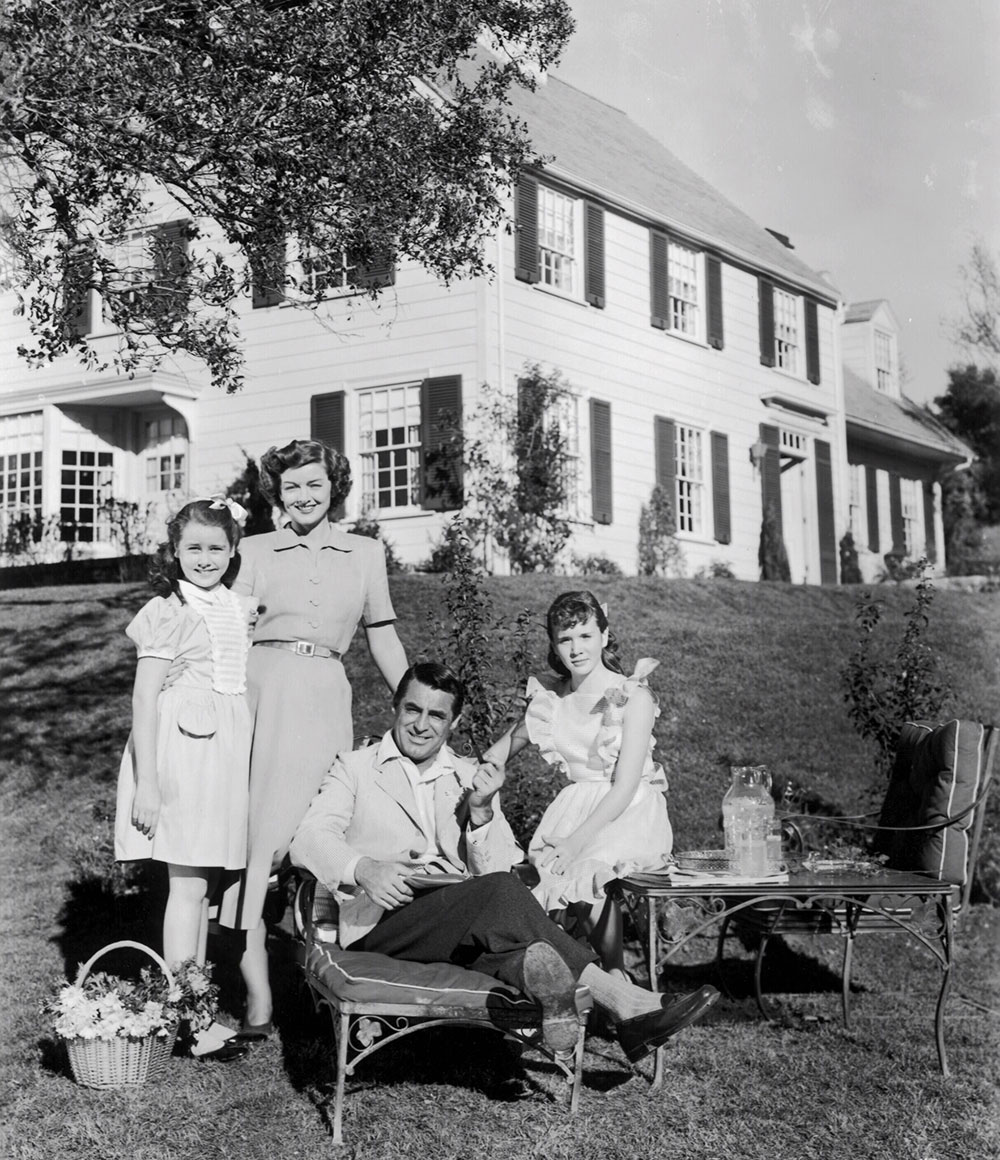
ASH: The house in The Swimmer is so important to the film, as are all the houses in it—just this notion of suburban home is central to that movie. And they all have swimming pools, of course, which is the conceit of the film. I saw in your book that the huge house in The Swimmer was recently for sale.
ID: In the real-estate ads for that house, a big selling point was that it was the house in The Swimmer and that Burt Lancaster actually swam in the pool. That was a fortuitous find for my book. By the time of The Swimmer, the architecture had shifted from the Blandings classic white clapboard house to a kind of a modernist house that represented a higher level for the bourgeoisie, the New Money, a group in play in The Swimmer. The first house Ned Merrill (Lancaster) visits is a white clapboard house, but as he progresses the houses change, the next one is more modern. When he meets those teenage kids at one of the houses, it’s quite modern, there’s a pool house, things you would not have seen there in the 1930s and ’40s. This is a purposeful progression in the movie.
ASH: Connecticut by then had become associated with modern architecture. As you point out, we see that in The Ice Storm (1997). Ang Lee went out of his way to contrast the colonial with the modernist in that film. And with it Connecticut movies entered a second phase of what you call “Dark Suburbia.”
ID: I write about it as a transition from the idyllic idea of transformation to status-seeking. The Connecticut house becomes a status symbol, not an escape. It’s no longer transformational. “Connecticut” becomes a type of brand with a certain fixed meaning. And there is a transitional period into this. With Blandings we move into these great Connecticut movies from the late 1940s and ’50s, a couple of them by Elia Kazan—Boomerang! and Gentlemen's Agreement (both 1947)—through The Man in the Gray Flannel Suit (1956), and it's all about Now we're in suburbia, and gee, it's not as perfect as we thought it would be. Then with The Swimmer, which is the sort of complete deconstruction of this transformational ideal, and then with The Stepford Wives (1975), it’s Oh no, this is actually much darker and sick.
After that, it’s “Dark Suburbia Redux,” because the movies become modern interpretations of that past. In The Ice Storm, suburbia equals death, which is beyond the idea in The Swimmer that Ned Merrill is a fraud. In that movie, we come to see he’s actually a social pariah. It’s a wonderful dream that he has in the beginning. That’s why I put The Swimmer on the book cover. It’s this seductiveness of Connecticut, but then also the very dark underneath where nothing that looks so beautiful could actually be that way. The values that we saw in Mr. Blandings have now turned us upside down. Ned has lost his wife, and his mistress won't speak to him. At the end of the movie, we understand he's a failure.
But as we get into movies like The Ice Storm, the modern interpretation becomes that the parents must be punished for all this hypocrisy. It wasn't enough to expose Ned Merrill, now there’s going to be the death of a child, because that’s the only way that these people can learn [that] the way they are living is wrong. This cycle of Connecticut movies—The Ice Storm, Far from Heaven (2002), Revolutionary Road (2008)—they are set in the past, they are about the past, and they have a very strong point of view on the past.
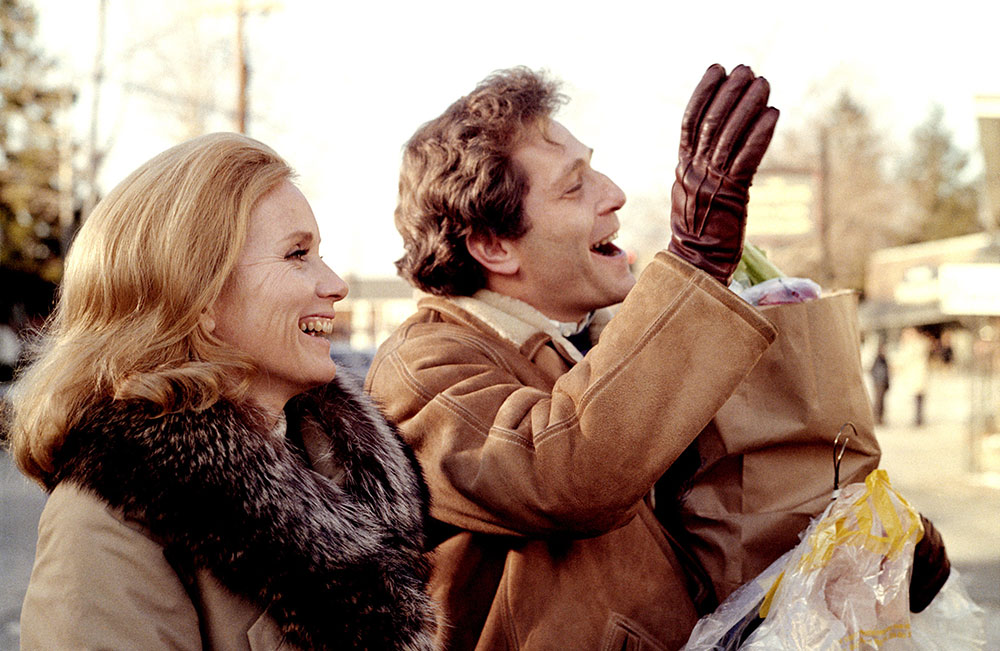
ASH: The one that really ended the previous cycle that The Swimmer was part of was Loving (1970), I think, before The Stepford Wives.
ID: Loving couldn't be darker. But it was advertised as a comedy. I just love that. I mean, how did that go over?
ASH: It's so dark. George Segal is great in it. It's the ultimate suburban nightmare movie that's not in any way an actual horror movie.
ID: On Loving the poster it said it was “a love story, Westport style.” It was based on a novel by an actual Westport writer, J. M. Ryan. He was so unhappy with the film that—and this, to me, is very Connecticut—he went to the premiere wearing a t-shirt that said in large letters, THEY CHANGED IT.
ASH: It's such an excellent movie, though.
ID: You have a house where a party takes place, like in The Ice Storm. It’s this crazy, absolutely crazy party. To me, it's darker than The Ice Storm because there's no editorial comment. It's just like, Whoa, you know, this is terrible behavior that doesn’t let up. What I tried to differentiate is that in The Ice Storm they're having a key party, so they must be punished for it. So therefore while all the parents are drinking and having fun and having affairs, a kid wanders off and is electrocuted. In Loving, it's like, No, wow, look at this marriage. It’s so terrible it makes anybody else’s marriage look okay.
ASH: Loving is related to The Swimmer but also to what you identify as these kinds of swinging 1960s Hollywood sex comedies that now seem maybe more dated than anything else in your book.
ID: Loving is the suburban sex comedy without the comedy. It was all “I had so many pills and so much booze, I don’t quite remember what happened,” but not funny. Here, you are going to see what happened. The failure of their marriage becomes sport for everybody else around them. With what are essentially witches looking on, saying, “Look at this guy destroying his life.”
ASH: Then The Stepford Wives becomes the ultimate expression of this completely terrible idea of Connecticut suburbia.
ID: Just completely oppressive to women. And that's all it is at that point.
ASH: I’ve always thought The Stepford Wives would have been a better movie if Frank Perry had made it. Bryan Forbes was not the person for that. He was British, and he wasn't in tune with suburban American life.
ID: And the screenwriter was William Goldman, who we know as the great genius screenwriter of Butch Cassidy and Sundance Kid (1969) and a number of others. But here, he really misses the mark. He gives it this Southern California spin. He wanted all the women to be like Playboy bunnies. It was supposed to decry robotic conformity, but I don't think that’s what Connecticut is all about when it comes to conformity. Here the idea was just that you do the grocery shopping, you clean the house and you're available to your husband.
ASH: It’s certainly a long way from Katharine Hepburn, Irene Dunne, Barbara Stanwyck, and Myrna Loy in the 1930s and ’40s movies.
ID: I found this great photo, which is so weird. I was trying to fit in instances, organically, of film people who were living in Connecticut. I knew that Bette Davis was living in Westport. I found this photo of Bette visiting the set of The Stepford Wives. And I was thinking, this would have been a much better movie if she had somehow been in it. As much as I love Katharine Ross, she just seems quintessentially California, and so does the rest of the cast, and it looks too much like the The Graduate (1967) to me. Anyway, after The Stepford Wives, from that point on, when a couple in a film is moving to Connecticut it starts to signal that something very bad is going to happen to them.
ASH: And then horror movies start to get made in Connecticut, from The Last House on the Left (1972) through Friday the 13th Part 2 (1981). Even something like We Need to Talk About Kevin (2011) reflects something of that.
ID: Yes, suburbia means death and horror. And any house is going to be a place where something really bad is going to happen. When Hollywood did the remake of The Stepford Wives (2004), which is even more artificial than the original, that further stamps Connecticut as filled with phonies, and everybody is white, everybody. And so movies like Stanley and Iris and Gentlemen's Agreement and Mystic Pizza (1988) all get buried in a way by the one idea.
ASH: It’s interesting to bring up Mystic Pizza in this context, because one of the lesser-known things about it, a missing piece that you discuss in your book, is how Amy Holden Jones, the horror director who made Slumber Party Massacre (1982), wrote Mystic Pizza and was really screwed by the producers of that film. They would not let her direct it and brought in a man, Donald Petrie, who had never even made a film before, to do it.
ID: I focus so much on Jones because I thought her whole story was so interesting. First of all, the idea that it was haphazard that she and her husband, Michael Chapman, the cinematographer of Taxi Driver (1976) and Raging Bull (1980), just happened to be in Mystic, Connecticut. They were looking for fried clams and she saw the sign for the pizza shop. He's from Maine, and they were on their way up there. She saw this sign that said “Mystic Pizza,” and because she had worked for Roger Corman and his whole idea was always come up with a title and then come up with a movie, she was intrigued, and they went in. Inside, she got the idea to make a female Diner (1982). She wrote it, and then she got pushed out of directing it. I wonder what kind of a film it would have been if she had directed it herself.
But I do like Mystic Pizza. It’s the first movie set in Connecticut where I saw something that was really reflective of the area that I grew up in, this blue-collar area around Stonington and Mystic. And Lily Taylor, Annabeth Gish, and Julia Roberts really looked like girls who lived there. Amy Holden Jones moved to Mystic, and she had a place there until a few years ago.
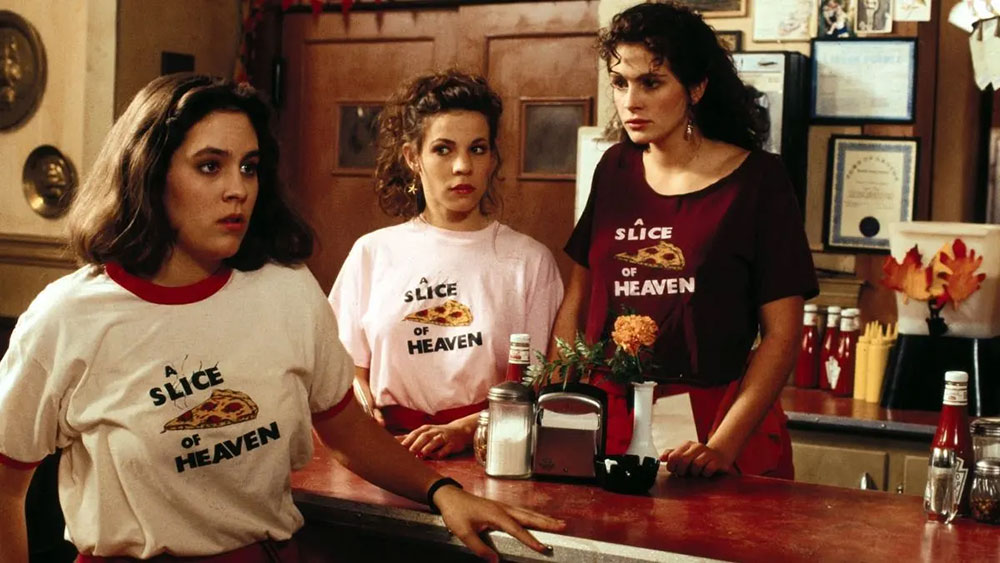
And I liked the idea that they mentioned Yale in a derogatory way, but then also placed it in a different light. Oftentimes, like in Hitchcock’s Rope (1948), which I write about in the introduction, Yale is depicted as an elite place full of sick murderers. The two murderers in Rope are going to Yale. But in Mystic Pizza, you have somebody who's on scholarship, who’s working as a babysitter and in a pizza joint so she can afford to go to Yale. And I just had never seen that in a movie, the idea that, you know, she wasn't some rich, elite person going to Yale, she was a townie. We used the word townie growing up, but it was not something you would hear in a movie.
And if you lived on the wrong side of town, like we did, the idea—which is valid!—that Julia Roberts is using her looks to get with a rich guy. . . . Even though that's still true today, would you actually be able to put that in a movie now? There’s a Soderbergh movie, one of the Ocean’s movies, where a character is down on his luck and the way that’s explained is to say he’s been living in East Haven, Connecticut, the wrong side of the tracks.
ASH: The depiction of the working class in Connecticut became more prominent in Hollywood films from the late 1980s and early ’90s, in the era of deindustrialization, specifically because of Robert De Niro. Stanley and Iris and Jacknife (1989), those two films, showed a very different Connecticut, as had Wanda (1971), the Barbra Loden film. But I’m not sure people know Wanda was filmed partially in Connecticut. Loden was supposed to be in The Swimmer, right? But for some reason she was fired after she got the part and filming had begun.
ID: Apparently The Swimmer was done and—I had this confirmed by somebody who worked on the movie—then Elia Kazan was the person who got Barbara Loden, his own wife, fired from the film. Burt Lancaster and Frank Perry showed him Loden’s scenes, and he told them she was bad in it. So as much as I admire Elia Kazan in many ways, there is also this. The relationship he had with Loden is very troubling. He looked at a rough cut of The Swimmer and told them he didn't think she was good in the movie, and they fired her and reshot her scenes with another actress (Janice Rule). But then Kazan helps her out in making Wanda, which she began working on right after The Swimmer. She used his camera equipment, and they shot some around Newtown. They obviously had a very complicated relationship, but she ends up using Waterbury and Holy Land, USA, which is in Waterbury, in Wanda.
ASH: Holy Land, USA, is one of the strangest things in the entire state of Connecticut. Many people have probably seen the giant glowing cross as they drive through Waterbury on the Interstate. But they don't know that it’s there to illuminate a weird, three-quarter scale model of the holy land that's broken down and in disrepair. Anyway, Barbara Loden shot part of Wanda there, but it has to be said that although Kazan may have helped her, it was not like he was breaking the bank on Wanda. That was an inexpensive film.
ID: Their story has a lot in common with Arthur Miller and Marilyn Monroe’s relationship. [They] were also living in Connecticut at one time. And of course Loden had played a character based on Monroe on stage in Miller’s play After the Fall. Monroe actually repaired Kazan’s relationship with Miller after the two men had fallen out. She just walked down the road to Kazan’s house in their town in Connecticut and got them to speak to each other again. So a lot of significant things have happened here that you could call transformational in 20th-century arts and in the lives of individual artists. I came back to that again and again, how many writers, artists, sculptors had these significant experiences in Connecticut.
ASH: You mention sculptors. One of the strangest things I learned in your book is that the studio of the sculptor Gutzon Borglum, the guy who carved Mount Rushmore, was also used by cheap horror filmmakers as a shop to make rubber suits for The Horror of Party Beach (1964), a film that has been called among the worst of all time.
ID: Yes, the same sculpture studio in Connecticut that gave us one of America’s greatest and most problematic wonders . . .
ASH: . . . also gave us one of America’s least-known and stupidest wonders.
ID: Exactly. I love that in 1964 Del Tenney and his crew on this cheap, nothing movie were using that same space making rubber monster suits where Borglum worked on this monumental, grandiose scale.
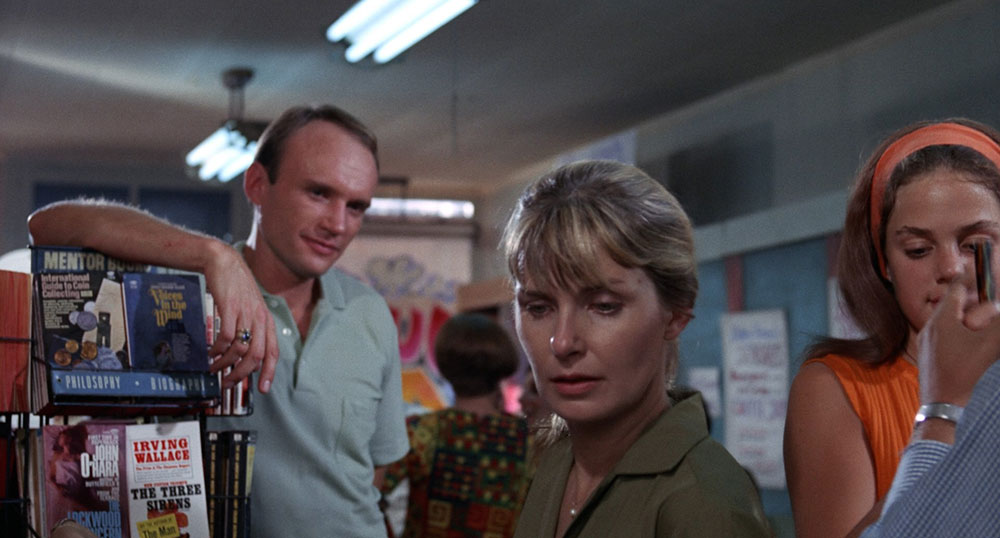
ASH: We can’t end on The Horror of Party Beach. You make a great case in the book that in some sense, Rachel, Rachel (1968)—which is kind of a forgotten movie Paul Newman made starring his wife, Joanne Woodward—is really the quintessential Connecticut film.
ID: Oh my God, absolutely. First of all, you never have movies like that today. If you do, they are kind of ham-fisted. It’s an adult woman’s coming-of-age story that just nails it. In Connecticut movies the most important thing is the search for identity, not the superficial criticisms of conformity. In both, though, it’s the uptight, Puritan point of view of standing in judgment on anybody who wants to be different. All the stereotypes are on view here. Are we the folksy, transformational people as in the screwball comedies, or are we mean, close-minded, and against anyone who wants to be different? I think the struggle of the Woodward character in Rachel, Rachel is really important in this context.
We just never have a movie about someone’s sexual awakening in a small town like this, someone in her thirties. And the fact that it’s directed by Newman—he and Woodward are really the quintessential Connecticut acting couple, movie star couple—and he’s this macho man who made this with his wife, it predates Cassavetes and Gena Rowland’s A Woman Under the Influence (1974). Or An Unmarried Woman (1978). Rachel, Rachel has a great storyline, and people are shocked to hear it when I do my talks about this book. There’s a scene with Estelle Parsons, who plays Rachel’s best friend, who is a lesbian repressing her own sexuality.
Again, it is more about repression than it is about conformity. That is the through-line, to me. We are the people brave enough to write and make films like Gentlemen’s Agreement, about bigoted covenants and restrictions, but how do these things really get fixed? That’s the dichotomy, and that’s what fascinates me in Connecticut and in Connecticut movies. Side by side with a lot of bravery, a lot of darkness persists.
Illeana Douglas will appear this Tuesday, December 12, at the Jacobs Burns Film Center in support of her new book, Connecticut in the Movies. A conversation with the writer and film critic Janet Maslin will be followed by a screening of The Swimmer (1968) on 35mm.
